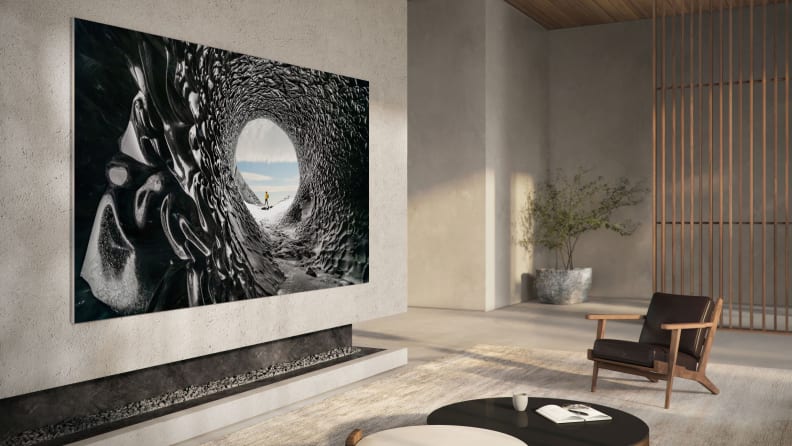Can Samsung's MicroLED TV claim the OLED throne?
Samsung claims its MicroLED TV tech is ready for prime time.

 Credit:
Samsung
Credit:
Samsung
Products are chosen independently by our editors. Purchases made through our links may earn us a commission.
During CES, Samsung debuted a lot of cool tech in the home theater space: Neo QLED TVs, new Frame lifestyle TVs, even solar-powered remote controls. But for TV nerds, Samsung's continued efforts to get MicroLED TVs into our homes were most exciting of all.
While Samsung didn't invent MicroLED—the self-illuminating technology was actually invented by two Kansas State University students around twenty years ago—it's (in this reviewer's opinion) the most exciting TV tech on the current horizon. Samsung first debuted its MicroLED TV back in 2018, and has iterated on it in some form at every CES since. If press releases are to be believed, 2021 is the first year we'll have multiple sizes of MicroLED TVs to choose from that don't need to be professionally installed.

Samsung essentially skipped OLED TV tech in favor of focusing on MicroLED. Will the gamble pay off?
Samsung briefly dipped a toe into OLED TV production back around 2014, but early on prophesized that OLED was not a viable solution for large-screen TVs. On the other side of the aisle, LG—Samsung's biggest rival in this space—has leaned harder into OLED TV production than ever, even providing OLED panels for other brands like Sony, Panasonic, and Vizio. Samsung is thus doubly invested in getting MicroLED through the painful early development stage and into the hands of reviewers and, hopefully, consumers as well.
To that end, Samsung has claimed that 2021 will be the year "MicroLED finally comes home." The modular, emissive technology works similarly to OLED on some fronts, with each microscopic picture element producing its own light and color. On the other hand, the modular nature of MicroLED means that it can be essentially snapped together like Legos, allowing for an almost unprecedented degree of screen size customization—alongside an unprecedented price tag.
For example, back in December of last year, Samsung released a 110-inch MicroLED TV in South Korea that will retail for $156,000. Yes, that's not a typo—over 150,000 greenbacks for the thing.
Yet being huge has not been MicroLED's main problem: the 2019 version of the business-facing product, "The Wall," was 156 inches diagonally. It's more exciting that, this year, Samsung has claimed a litany of smaller sizes will be available; we've heard there may be 99- and 88-inch sizes sooner than later, and based on the 110-, 99-, and 88-inch designations, I'm beginning to wonder if all the variants will be multiples of eleven.

Will MicroLED go mainstream in 2021? Probably not. But we might finally get one in for testing.
MicroLED has some catching up to do: OLED announcements from Skyworth and LG have helped cement the idea that OLED TVs are something everyone can buy, while Samsung's MicroLED is only just now something you can hang on the wall without a white glove service. But Samsung also claims that MicroLED is brighter, more flexible, and will last thousands of hours longer than OLED, so the adjustment period may well be worth the wait.
Having seen MicroLED in person a few times, I can confirm that it's amazing technology. Whether it manages to become mainstream may have everything to do with how viably it's positioned as a consumer product in 2021. Bon chance, Samsung.
